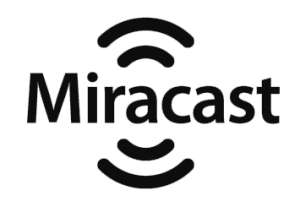If you’ve heard of Miracast (occasionally referred to as WiFi Display) but never dipped your toes in, this post is for you!
We’ll start with the basics…
Miracast allows you to send video and audio from your phone or tablet (if they support it) to another device. So if you imagine that a successful Miracast connection is like having an invisible HDMI cable between two devices, you’re half way there already!
To use Miracast you will need two compatible devices, one to send the data, and another to receive it. For the purposes of this article, we’ll be using a Samsung Galaxy S5 smartphone to send, and a DroiX® T8 to receive the data and display it on a TV. Screen mirroring is the term Samsung use, other manufacturers will use different names, or even different protocols and call it screen mirroring, so you will need to check your manual or online support resources for your phone/tablet to check exactly how the connection is set up.
More recent Android phones/tablets that run Marshmallow (Android 6.0) will not likely support Miracast (though it is worth checking your manual) as Google now prefer to push their own Chromecast hardware and protocols instead.
KitKat Based DroiX Models
First, (with your DroiX and TV already turned on, in Android if you have a dual boot device), click the Settings icon on your DroiX homescreen (normally one or two cogs).
Click the Advanced tab, then the Miracast entry. Click on Definition Settings and change it to HD.


Next bring up the Quick Settings area on the S5 phone (swipe down with two fingers) and click the Screen Mirroring icon to turn the feature on. You can also access it via the normal notification drawer (swipe down with one finger).
(If you have customized your phone and removed the “Screen Mirroring” shortcut, you can click the cog to enter the full Settings area, scroll to the “Connections” area, then almost at the bottom you’ll see the Screen Mirroring link to click).
The phone will now scan for any nearby devices that support Miracast. If none appear, try rebooting both your phone/tablet and the DroiX.
The first time you attempt a connection, it may fail. If this occurs, click Search Device on the DroiX with the phone/tablet set to try and connect again.
Once a connection is possible, you will be asked to confirm you want to the screen mirroring to actually start (to prevent other people from forcing you to look at their phone/tablet!)
You should now see a message on the S5 confirming the connection has been made.

If you rotate your phone or tablet, the screen will alter accordingly on your TV.
Some screens will have a fixed rotation, such as Samsung’s launcher.


You can now open your application or game.
If your phone or tablet is left alone, it may lock the screen and then woken up, present an unlock screen. The Miracast system will show the lock screen shown above.


To end the Screen Mirroring connection, swipe down the notification drawer and click on the Screen Mirroring enabled entry. Click the End Connection button at the bottom, and you’ll be asked to confirm. If your phone or tablet is using the battery (not connected to a charger), don’t forget to disconnect when you have finished with Miracast, as the process consumes a fair amount of power.
Lollipop Based DroiX Models
To come
First, (with your DroiX and TV already turned on, in Android if you have a dual boot device) bring up the Quick Settings area on the S5 phone and click the Screen Mirroring icon to turn the feature on.
(If you have customized your phone and removed the “Screen Mirroring” shortcut, you can click the cog to enter the full Settings area, scroll to the “Connections” area, then almost at the bottom you’ll see the Screen Mirroring link).
The phone will now scan for any nearby devices that support Miracast. If none appear, try rebooting both your phone/tablet and the DroiX.
Click the DroiX entry, and you should see















